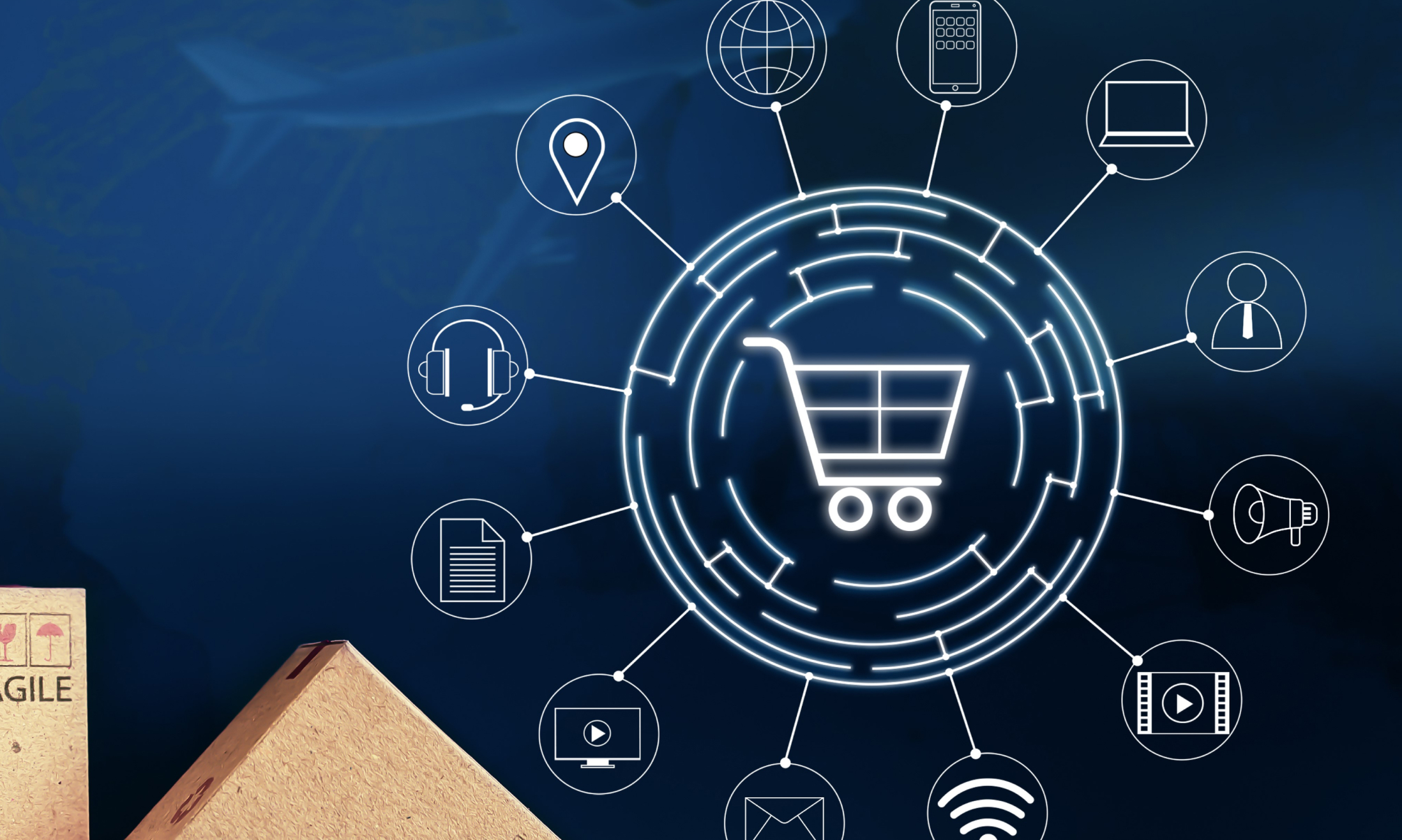For retailers, omnichannel distribution is key to offering a consistent customer experience no matter how or where they shop. By integrating all sales channels into a single system, retailers can manage inventory and fulfillment more efficiently, while also providing a better customer experience. In this blog post, we’ll explore the basics of omnichannel distribution and discuss some of the benefits it offers retailers. We’ll also take a look at some of the challenges involved in implementing an omnichannel strategy and offer tips for getting started. So, if you’re interested in learning more about omnichannel distribution, keep reading!
The Comprehensive Overview Of Omnichannel Distribution
Omnichannel Distribution Definition
Omnichannel distribution is a type of product distribution that uses multiple channels to reach potential customers. This can include both online and offline channels, such as brick-and-mortar stores, eCommerce websites, social media, and more. Omnichannel distribution allows businesses to have a wider reach and connect with customers through multiple touchpoints.
The goal of the omnichannel distribution is to provide a seamless experience for customers, no matter how or where they are shopping. This means that businesses need to have a cohesive strategy that integrates all of their channels and touchpoints. Omnichannel distribution can be a challenge for businesses, but it can also lead to increased sales and customer loyalty.
If you are considering using omnichannel distribution for your business, it is important to carefully plan and execute your strategy. This model of distribution can be complex, but with the right planning and execution, it can be a powerful tool for growing your business.
Omnichannel Distribution Types

One way businesses can improve the customer experience is through omnichannel distribution, which allows customers to purchase products through multiple channels and have them delivered in various ways. Here are six common types of omnichannel distribution:
- Buy online, pick-up in-store: This option allows customers to purchase a product online and then pick it up at their local store, saving them time since they don’t have to wait for shipping or delivery.
- Buy online, drop-shipping: With this option, customers can buy a product online and have it shipped directly from the manufacturer or distributor to their doorsteps.
- In-store purchase, home delivery: Customers can visit a physical store to make their purchases and have them delivered to their homes for added convenience.
- Ship from store: This option allows customers to purchase a product online and have it shipped directly from a physical store location rather than a central warehouse.
- Buy online, return in-store: Customers can make their purchases online but also have the option of returning them at a physical store location for added flexibility.
- Same-day or on-demand delivery: Some consumers want instant gratification in today’s fast-paced society. This type of omnichannel distribution offers same-day or even on-demand delivery options for those who want their products as soon as possible.
Overall, these various types of omnichannel distribution offer convenience and flexibility for customers while also increasing efficiency for businesses by utilizing multiple channels and delivery methods.
The Importance Of Omnichannel Distribution

The concept of omnichannel distribution has become increasingly important for businesses in today’s digital age. Simply put, it means providing customers with a seamless shopping experience across multiple channels, such as brick-and-mortar stores, websites, mobile apps, and social media platforms.
More Exposure To Potential Customers
One major benefit of omnichannel distribution is the ability to target different consumer demographics and preferences. For example, some shoppers may prefer the convenience and accessibility of online shopping, while others may prefer the in-person experience of a physical store. By offering both options, businesses can cater to a larger group of potential customers.
Additionally, having an omnichannel presence can also lead to increased customer satisfaction and loyalty. Customers have the flexibility to shop in their preferred method and have the option to switch between channels during the purchasing process. This convenience can improve the overall shopping experience and result in repeat purchases from satisfied customers.
It’s clear that omnichannel distribution offers greater exposure to potential customers and can ultimately result in greater business success. Companies should consider implementing an omnichannel strategy in order to stay competitive in today’s rapidly evolving market.
A Source Of Marketing-related Data
The omnichannel approach to distribution allows businesses to track customer behavior across multiple channels, such as in-store, online, and through social media.
This valuable data can then be used to improve marketing strategies and overall operations.
For example, a retailer may notice that a certain promotion on their website leads to an increase in in-store purchases. This information can help inform future promotional efforts.
Additionally, tracking customer behavior across channels allows for a more comprehensive understanding of their purchasing habits and preferences.
This comprehensive understanding can lead to targeted and personalized marketing efforts, ultimately improving customer satisfaction and brand loyalty.
Cost Savings For Businesses

As companies continue to adopt the omnichannel distribution model, they are not only seeing an increase in sales and customer satisfaction but also experiencing cost savings.
One way businesses can save money through omnichannel distribution is by having a comprehensive view of their supply chain and inventory management. By tracking customer behavior across multiple channels, companies can better predict demand and avoid overstocking or understocking certain products. This leads to less waste and greater efficiency in the supply chain, resulting in cost savings for the business.
Another way that omnichannel distribution can lead to cost savings is by reducing the need for brick-and-mortar stores. With customers able to purchase products online or through mobile apps, businesses can focus their resources on digital channels rather than maintaining physical locations. This not only saves money on rent and operating costs but also gives companies the flexibility to reach a wider audience without being limited by location.
Overall, the modern business landscape requires a strong omnichannel strategy in order to stay competitive and meet the demands of today’s tech-savvy consumers. It not only provides benefits for customers but also offers a wealth of opportunities for companies to improve their operations and drive growth.
Difficulties In Processing Omnichannel Distribution

While an omnichannel distribution strategy can offer numerous benefits for businesses, it also presents certain challenges that must be carefully managed in order to be successful.
One of the major challenges in implementing an omnichannel distribution strategy is ensuring that all channels are properly integrated and communicating with each other. This can be a difficult and time-consuming process, especially for larger organizations with multiple systems and databases. Additionally, there may be logistical challenges in fulfilling orders through multiple channels, as well as coordinating inventory levels across all channels.
Another issue is providing a consistent customer experience across all channels. This includes not only the overall branding and messaging but also factors such as pricing and promotions. It can be difficult to ensure that customers have the same access to deals and offer regardless of the channel they are using to make a purchase.
Furthermore, many organizations struggle with collecting and analyzing data from multiple channels in order to gain insights into customer behavior and make strategic decisions. It can be difficult to integrate and analyze data from various systems, particularly in real time.
Overall, effectively managing omnichannel distribution requires careful coordination and attention to detail in order to meet the needs and expectations of customers.
Omnichannel Distribution Strategies

Utilizing an omnichannel approach allows businesses to meet customers where they are, providing a seamless shopping experience across multiple platforms. By implementing these strategies, companies can expect to see not only an increase in customer satisfaction but also a boost in revenue.
Seamless Integration Of Physical And Digital Channels
One of the successful omnichannel distribution strategies is having a seamless integration between physical and digital channels. This means ensuring that customers have a consistent brand experience no matter if they are shopping in-store, online, or through a mobile app.
A seamless integration between physical and digital channels allows for a smooth transition for customers as they move between shopping in-store, online, or through a mobile app. This not only improves the overall customer experience but also helps to increase sales by providing multiple options for customers to make purchases.
One way companies can achieve this seamless integration is by implementing unified inventory management systems that track and update product availability across all channels.
Additionally, having a consistent branding strategy across all channels helps to reinforce the company’s identity and further strengthens the omnichannel approach.
Implementation Of Inventory Tracking Systems

Another omnichannel distribution strategy is to put an inventory tracking system into practice as it can improve customer satisfaction by ensuring that the desired products are available and reducing unnecessary delays in fulfillment.
One way to implement an inventory tracking system is to integrate it with the company’s point-of-sale system, allowing for real-time updates on product availability across all channels.
Another option is to use radio frequency identification (RFID) tags on products, which can automatically update inventory levels as products are sold or returned. These systems can also provide valuable insights into sales trends and purchasing patterns. Implementing these systems can potentially increase efficiency and revenue by reducing instances of overselling or lost sales due to out-of-stock items.
Personalized Customers Experiences
Personalized customer experiences is an omnichannel distribution strategy that involves gathering and utilizing customer data across various touchpoints, such as online purchases, in-store visits, and interactions with a brand’s mobile app. This allows for targeted marketing efforts and personalized experiences for each individual customer.
In order to effectively implement this strategy, brands can utilize loyalty programs to gather information about purchasing habits and preferences. Additionally, technologies like artificial intelligence and machine learning can help analyze this data and provide more personalized recommendations and promotions.
Implementing a personalized customer experience strategy can lead to increased customer satisfaction and loyalty, resulting in higher sales and profitability for the brand. It’s also important to note that in today’s digital age, customers expect a personalized experience and may choose to do business with a brand that offers it over one that does not.
Omnichannel Distribution Examples

If you’re considering implementing an omnichannel retail strategy or expanding your existing one, look no further. The industry-leading companies below have the best omnichannel distribution practices that will give you the inspiration you need.
Walmart
One example of omnichannel distribution can be seen with the retail giant, Walmart. The company utilizes a combination of brick-and-mortar stores, online ordering, and in-store pickup, and even grocery delivery services to meet the needs of its customers. This allows customers to shop however they prefer – they can browse and purchase items online, pick up their purchases at a physical store location, or have groceries delivered straight to their door.
Kate Spade
Another example is the fashion brand, Kate Spade. The company offers a seamless shopping experience across various channels such as its website, physical stores, third-party retailers, and even social media platforms like Instagram. Customers can browse and purchase items from any of these channels and have the option for in-store pickup or home delivery.
Nike
Nike is yet another company that has perfected the art of omnichannel distribution. The sportswear brand offers a seamless shopping experience online, in physical stores, and even through its mobile app. Customers can purchase items and have them delivered to their homes or pick them up at a local store. Nike also offers customized products that can be ordered through its website or mobile app and picked up at a physical store location.
Amazon
Amazon is a prime example of a company that utilizes omnichannel distribution. The online retailer offers a combination of online ordering, in-store pickup, and home delivery to meet the needs of its customers. Amazon also has a physical presence through its brick-and-mortar stores, Whole Foods Market locations, and Amazon Go locations. Customers can also order items through the Amazon mobile app and have them delivered to their homes or pick them up at a local store.
Disney
Disney is another company that offers a seamless omnichannel shopping experience. Customers can purchase tickets to Disney parks and attractions online, through the Disney mobile app, or at physical locations such as kiosks and ticket booths. They can also book hotel rooms and vacation packages online or through the Disney mobile app. And once they’re at the park, they can use the Disney mobile app to check wait times, view maps, and even order food.
These are just a few examples of companies that utilize omnichannel distribution to provide a seamless shopping experience for their customers. Omnichannel distribution is becoming increasingly popular as more and more consumers expect a seamless, convenient, and personalized shopping experience.
Wrap Up
Omnichannel distribution has quickly become a necessary piece of the retail puzzle, but it can be difficult to execute properly. By taking into account the various difficulties and examples of successful omnichannel distribution, retailers can create a plan that will work for them and their customers.
For more insightful information like this, check out Tigren’s blog. Our team has a wealth of experience in eCommerce and is always coming up with helpful new content and advice. Our articles cover a wide range of topics related to eCommerce, from online marketing strategies to development tips. If you’re ever having problems with your eCommerce site, you can always count on us for help – we’re eCommerce developers and we’re always happy to lend a hand.

Read more:

